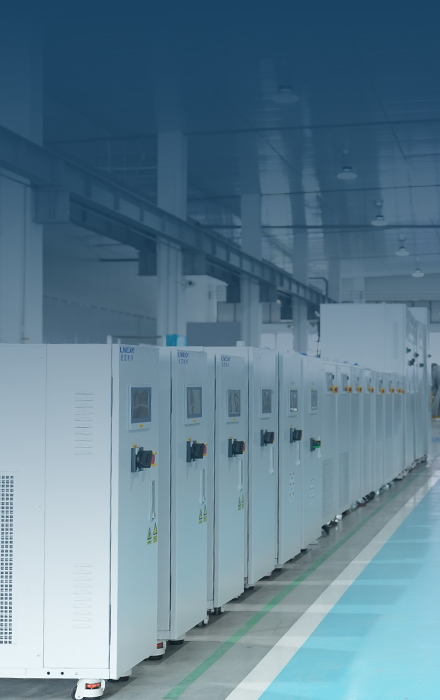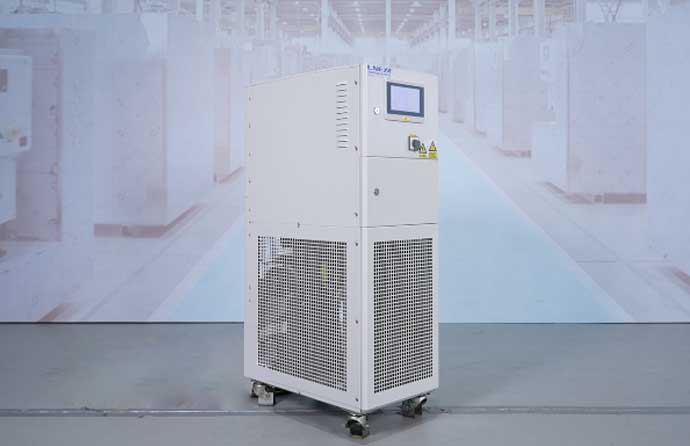Chiller Load vs Chiller Capacity




Many people think that the load and cooling capacity of a chiller are the same thing. In fact, they are very different. This article introduces the relationship and helps you choose the right equipment parameters.
What is the chiller load?
The chiller load refers to the amount of heat that the chiller needs to take away. The load is the amount of heat that needs to be cooled in the system that the chiller is responsible for cooling. For example, a multi-channel chiller needs to cool 5 injection molding equipment at the same time, and each piece of equipment generates 10kW of heat when it is running. Then the total load of this chiller is 50kW.
The heat load of the cooling system usually comes from the heat generated by the equipment when it is running, the heat conducted by the environment, or the heat generated by the reaction. However, this heat is not constant, so the load of the chiller will also fluctuate.
What is the chiller cooling capacity?
The cooling capacity of the chiller represents how much heat the equipment can take away per unit time. For example, a cooling device with a cooling capacity of 50kW can take away 50kW of heat in one hour. However, the standard cooling capacity provided by the chiller manufacturer is tested under standard operating conditions, with specific flow rates, inlet and outlet temperatures, and ambient temperatures.
Therefore, in actual use, the performance of the equipment will be different from the standard cooling capacity. When an air-cooled chiller is tested in the factory, the standard cooling capacity is 100kW, but when it is used in summer, affected by the ambient temperature, its actual cooling capacity may be only 85kW.
Want to calculate your system’s required cooling capacity?
The relationship between chiller load and cooling capacity
From the above introduction, we already know that load and cooling capacity are not the same thing. So, what is the relationship between them?
We can understand it from the perspective of supply and demand. The load of the chiller is equivalent to the demand for cooling capacity, and its size is determined by the equipment and process that generates heat. The cooling capacity refers to the amount of cooling that the chiller can supply, which is determined by the chiller system’s performance. Seeing this, you can easily conclude that the cooling capacity must be greater than the load to remove the heat promptly. If it is still difficult to understand, you can imagine the load as a flame and the cooling capacity as a fire extinguisher. If you try to put out a forest fire with a small-capacity fire extinguisher, it is impossible to do so.
Similarly, if the process generates 100 kW of heat per hour and the chiller can only generate 60 kW of cooling capacity, the cooling system and process will likely be abnormal when the cooling capacity is less than the load. When the cooling is insufficient, the temperature of the coolant will continue to rise. If its temperature is close to the process temperature, the heat cannot be transferred and dissipated. Take the laser cutting machine as an example. If the temperature of the laser head cannot drop, it will frequently trigger alarms or shut down due to overheating. This also affects the chiller system. Under high load, the chiller may trip and the compressor will experience increased wear.
• Are you thinking that buying a chiller with a large cooling capacity is enough?
This method seems very safe, but it also has certain disadvantages. The larger the cooling capacity, the higher the price of the chiller. Moreover, if you want to use a chiller with a cooling capacity of 20kW to cool a laboratory equipment with a heat load of 5kW, this will waste the capacity of the chiller. Especially when using a fixed-frequency chiller, it cannot adjust the compressor speed according to the load, which will make the number on your electricity bill larger.
• Is it okay if the cooling capacity is the same as the load?
No. Because the load is variable, you need to consider the cooling capacity of the chiller under the maximum load and the worst working condition to prevent the load from being higher than the chiller.

• We can conclude that the cooling capacity of the chiller must be redundant.
Our experts recommend that when you purchase a cooling system, it is best to choose a device with a cooling capacity that is 1.1~1.2 times the actual load. If your application heat load is 100kW, it is more appropriate to choose a chiller with a cooling capacity of 110kW~120kW. It can meet the changing working conditions without wasting too much energy.
Choose the right industrial chiller
Do you need LNEYA to help you determine the cooling capacity and load? Our chiller experts will provide you with the most suitable cooling solution by asking you some questions related to the working conditions.
Customize your exclusive chiller system now.
Related chillers
CONTACT US
TEL:
EMAIL:
WeChat & WhatsApp:

Wechat QR

Have a question or need a quote? Fill out the form below, and our team will get back to you within 24 hours.
 LNEYA Industrial Chillers Manufacturer Supplier
LNEYA Industrial Chillers Manufacturer Supplier














